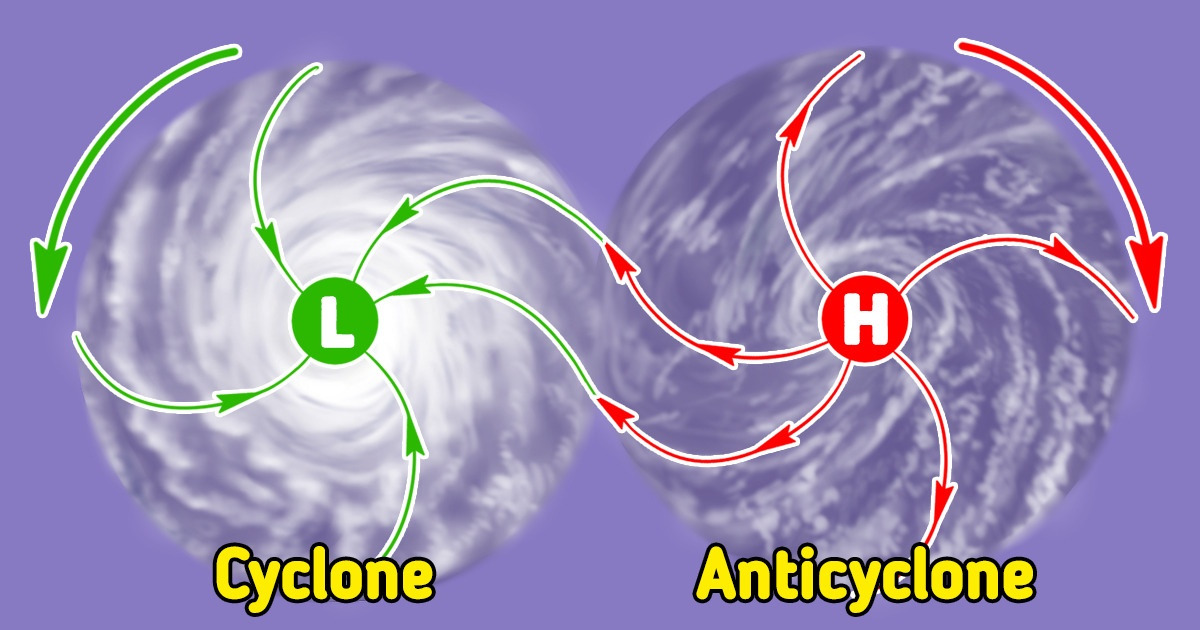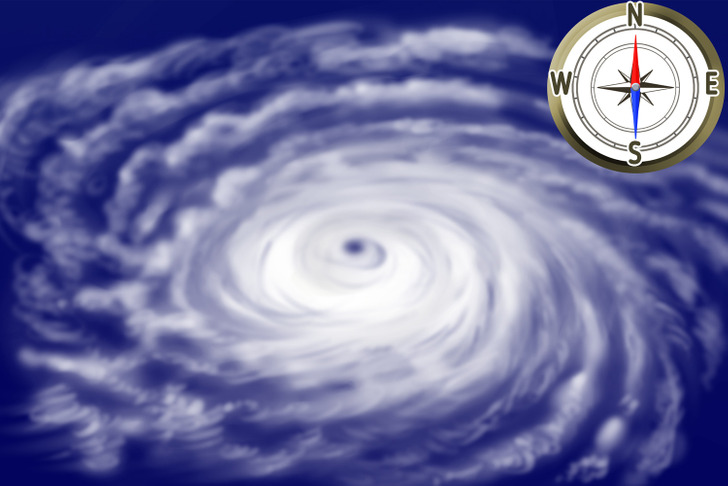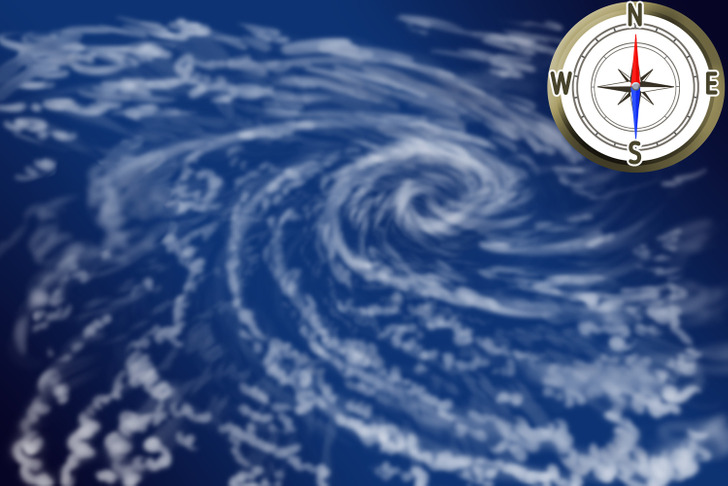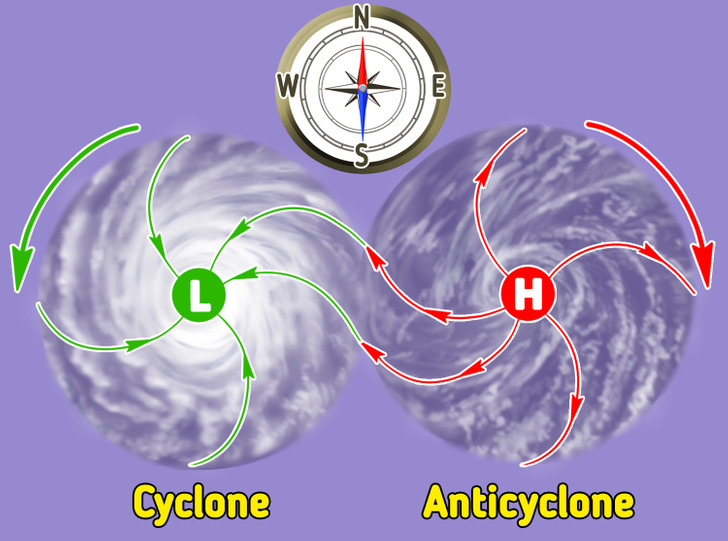Cyclones and Anticyclones, and How to Differentiate Them

Weather forecasts sometimes mention the words “cyclone” and “anticyclone.” A cyclone usually indicates strong winds, rains, and other forms of bad weather, and an anticyclone, on the contrary, is about clear skies, sun, and cool dry air.
5-Minute Crafts would like to tell you about what a cyclone and an anticyclone are, and what the difference is between them.
What is a cyclone?

A cyclone is a large air mass that rotates around a strong center of low atmospheric pressure. If you look at a cyclone from above, you will see that the air in it circulates counterclockwise in the Northern Hemisphere and clockwise in the Southern Hemisphere.
In a cyclone, air near the ground is pushed toward the center — into the area of low pressure. It then rises upward, expanding and cooling as it moves. As the air cools, it becomes more humid, resulting in cloudiness and high humidity inside the cyclone. Because of this, a cyclone is usually associated with bad weather: overcast skies, precipitation, strong winds, and even hurricanes.
There are 3 types of cyclones.
- Extratropical cyclones are typical for middle latitudes. These everyday phenomena along with anticyclones determine the weather over much of the Earth.
- Tropical cyclones form in the tropical regions of the planet. The air inside them is warm, which leads to the condensation of water vapor and, as a result, strong winds and heavy rains. Tropical cyclones are the reason why hurricanes form. Hurricanes usually generate off the coast of West Africa and move toward Central America and the eastern United States. Hurricanes increase in size and strength until they reach land or more northern latitudes. Apart from strong sustained winds, they bring heavy rain and devastating ocean waves.
- Subtropical cyclones include characteristics of both tropical and extratropical cyclones. They are associated with strong sustained winds, which rarely become a hurricane. Subtropical cyclones form mainly between the equator and the 50th parallel.
What is an anticyclone?

An anticyclone is also a large air mass that rotates around a central region. However, the pressure inside it is high, and the air rotates clockwise in the Northern Hemisphere and counterclockwise in the Southern Hemisphere.
Air at the center of the anticyclone is forced away from the area of high pressure and replaced by a downdraft of air. It compresses and heats up as it moves down, reducing its humidity and leading to fewer clouds inside the anticyclone. Because of this, anticyclones are usually associated with fair weather: low clouds, clear skies, sunshine, and light or no wind.
What’s the difference between a cyclone and an anticyclone?

Here are the key differences between a cyclone and an anticyclone.
- The air mass rotates around the center of low atmospheric pressure in cyclones, and of high atmospheric pressure in anticyclones.
- Air in a cyclone rotates counterclockwise in the Northern Hemisphere and clockwise in the Southern Hemisphere. And in an anticyclone, it’s vice versa.
- Cyclones are associated with bad weather (winds, high clouds, and precipitation), while anticyclones are associated with good weather (clear skies, sun, and cool dry air).
- Cyclones can lead to strong winds and hurricanes, while anticyclones can’t.